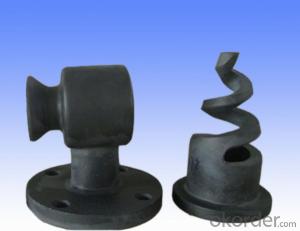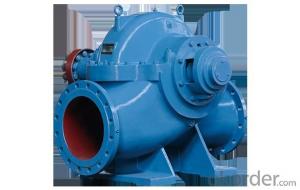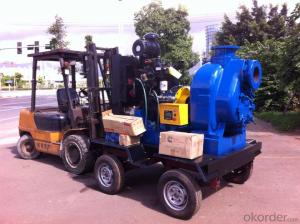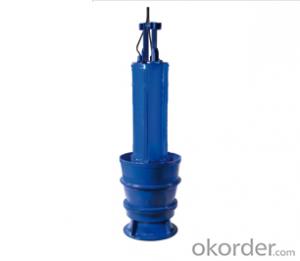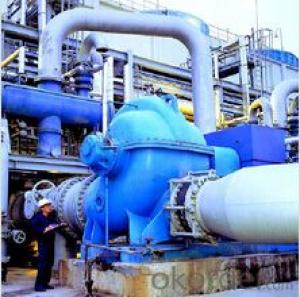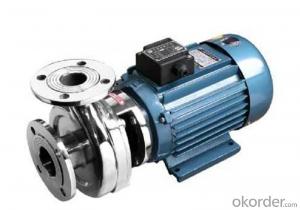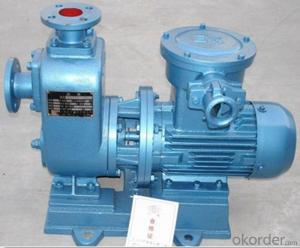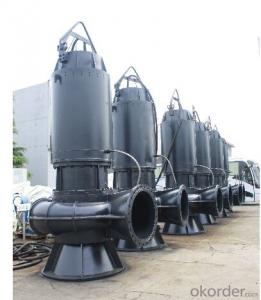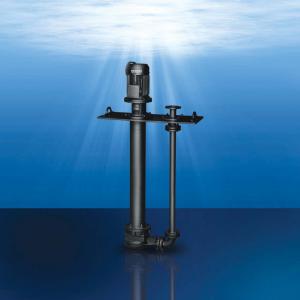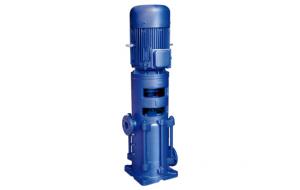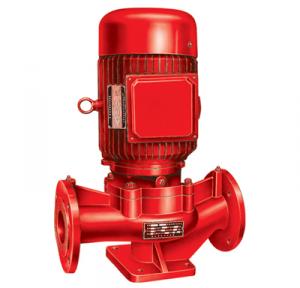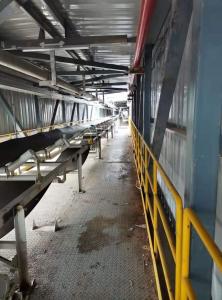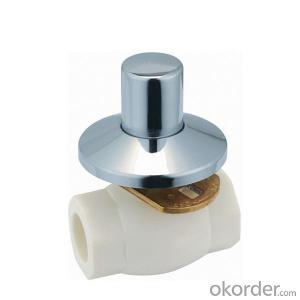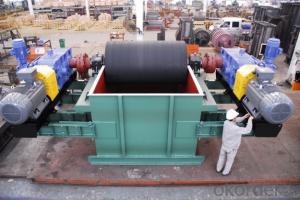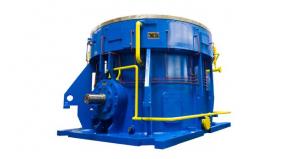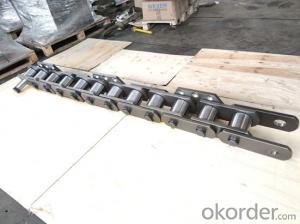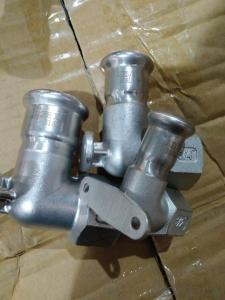SSIC Silicon carbide nozzle
- Loading Port:
- China main port
- Payment Terms:
- TT OR LC
- Min Order Qty:
- 5 m.t
- Supply Capability:
- 50 m.t/month
- Option:
- order
OKorder Service Pledge
OKorder Financial Service
You Might Also Like
Item specifice
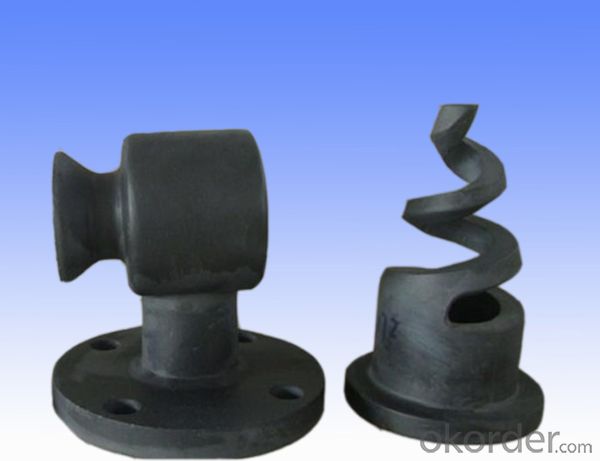
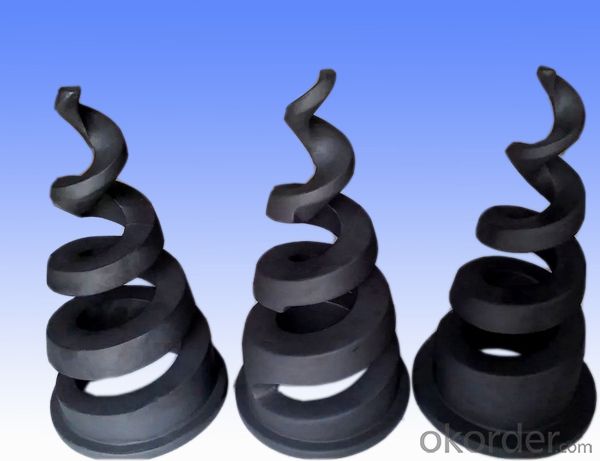
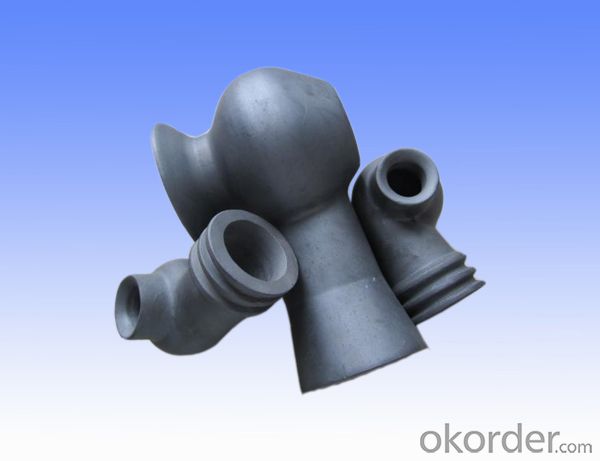
Tailor-made for customers all kinds of pumps with my company, kettle, bearing no pressure sintering silicon carbide mechanical seal, and all kinds of resistance corrosion pump parts and the accessories. Our company pressureless sintered silicon carbide products a reaction bonded silicon carbide products, can easily adapt to the harsh working conditions, in strong corrosive, strong wear, high temperature, high pressure, high strength harsh harsh under complex conditions is more outstanding. At the same time, our company to provide customers with nozzles, armored body armor plate and other special-shaped pieces of custom-made service.
Compared with the reaction sintered silicon carbide product (SSIC), the production process of the sintered silicon carbide product (RBSIC) is complex and the production investment is high. In addition, whether it is in the resistance to corrosion and abrasion, compressive and flexural fracture resistance of or high pressure, high temperature and other properties are more excellent, this is pressureless sintering silicon carbide products will in the near future completely replace reaction bonded silicon carbide products is one of the important reasons. The main varieties of the pressureless sintering silicon carbide products with all kinds of mechanical seal with sealing ring and moving ring and static ring, corrosion resistant pump, magnetic pump, shield pump components. At the same time, the production special-shaped pieces of nozzle, wire drawing die, armor plate. According to the drawings, we will provide customers with satisfactory products and customer satisfaction. Let customer satisfaction is one of the purposes of our company has been pursued, but also one of the objectives pursued by all the staff of our company.
Features: high temperature resistance, wear resistance, corrosion resistance, oxidation resistance, hardness, heat conduction
Main products: mechanical seals, pump parts, nozzles, bullet proof plate
Mechanical seals: high hardness, high wear resistance, good self - Lubrication and high heat conductivity, so the service life of mechanical seal is greatly improved.
Pump: resistance to corrosion and wear characteristic of the pressureless sintering silicon carbide become magnetic pump sliding bearing, resistant corrosion pump sleeve, shielding pump assembly, etc. various kinds of pump of choice
Nozzle: wear resistant, high temperature resistance, high hardness characteristics of the normal pressure sintering silicon carbide nozzle to become a perfect alternative to carbide nozzle
Armor: light weight, high hardness, good ballistic performance, pressureless sintering of SiC for your life and property security escort
Here are some of the pressure sintered silicon carbide products, physical and chemical parameters:
medium | content | Causticity | |||||||
Atmospheric SIC | The reaction SIC WC | WC | AL2O3 | ZrO2 | Si3N4 | stainless steel | steel | ||
HNO3 nitric acid | 50% | A | A | C | A | A | C | C | C |
Hydrochloric acid HCI | 35% | A | A | C | A | A | C | C | A |
Sulfuric acid H2SO4 | 98% | A | A | C | A | A | C | C | A |
Hydrofluoric acid HFF | 40% | A | C | C | C | C | C | C | C |
Phosphoric acid H5PO4 215OC | 85% | C | C | C | C | C | C | C | C |
HNO3+HF | 20%+5% | A | C | C | C | C | C | C | C |
Sodium chlorate NaCIO | 10% | A | B | C | A | A | A | C | A |
Sodium hydroxide NaOHH | 50% | A | C | A | B | A | B | A | A |
Potassium hydroxide KOH | A | C | A | B | A | B | A | A | |
Acetic acid CH3COOHH | 80% | A | A | C | A | A | C | C | C |
Sodium sulfate + Na2CO3 + H2SO4 925OC
| A | A | C | A | A | C | C | B | |
Silica solution SIO2
| B | C | C | C | C | C | |||
Assessment Method: the specimen prior polishing, immersed in the test liquid (70OC) for 100 hours, the weight was measured and observed microstructure, weight reduction is calculated by the degree of corrosion was observed microstructure for corrosion to comprehensive judgments. | |||||||||
A level (corrosion): corrosion rate ≤0.125mm / ingredients in a small amount of corrosion observed slice | |||||||||
Level B (somewhat resistant): corrosion rate = 0.125-1.0mm / or annual corrosion rate ≤0.125mm / observe a large number of corrosion | |||||||||
Class C (resistant to corrosion): corrosion rate ≥1.0mm / or the main ingredient of Corrosion
Silicon carbide performance indicators
Index Name
| Atmospheric SiC | Reaction Bonded Silicon Carbide |
Purity (%) of silicon carbide | > 97 | >90 |
Density (g / cm) | 3.06-3.15 | >3.05 |
Particle size (um) | 0.5-0.7 | 8-20 |
Hardness (HRA) | ≥90 | ≥90 |
Flexural Strength (MPa) | 400-580 | 350-450 |
Compressive strength (MPa) | 3900 | >2500 |
Fracture Strength (MPa) | 3.05-4.6 | 4.3 |
Elastic Modulus (GPa) | 380-410 | 420 |
Thermal conductivity | 102.6 | 35-110 |
Coefficient of thermal expansion (1 / ℃) | 4.02×10 | 4.3×10 |
Poisson's ratio | 0.14 | 0.15 |
- Q:How can a pump shaft be protected from shaft misalignment?
- A pump shaft can be protected from shaft misalignment by ensuring proper installation and alignment of the pump and motor, regular inspection and maintenance of the coupling, and using flexible couplings or alignment devices to absorb any misalignment and prevent it from affecting the pump shaft.
- Q:How does the length of a pump shaft affect pump performance?
- The length of a pump shaft can have a significant impact on pump performance. A longer shaft can lead to increased deflection and vibration, which can negatively affect the pump's efficiency and reliability. When a pump is in operation, the rotating impeller creates a centrifugal force that puts stress on the shaft. If the shaft is too long or not properly supported, it may experience excessive deflection or bending. This deflection can cause misalignment between the impeller and the casing, resulting in reduced pump efficiency and increased energy consumption. Moreover, the increased vibration caused by a longer shaft can lead to premature wear and tear on the pump components, such as bearings and seals. This can result in increased maintenance costs and decreased pump reliability. Additionally, the length of the pump shaft affects the critical speed of the shaft, which is the rotational speed at which resonance occurs. If the pump operates at or near its critical speed, it can lead to excessive vibration, which can damage the pump and surrounding equipment. In summary, the length of a pump shaft is an important factor in pump performance. It is crucial to ensure that the shaft is properly sized and supported to minimize deflection, vibration, and misalignment. By doing so, pump efficiency, reliability, and longevity can be maximized, reducing operational costs and improving overall system performance.
- Q:What material is used to make the pump shaft well?
- If it is an ordinary pump, the medium is clear water, it is the general 45# steel on the line;
- Q:What are the key factors to consider when selecting a pump shaft?
- When selecting a pump shaft, some key factors to consider include the material of the shaft, its diameter and length, the type of pump being used, the operating conditions and environment, the torque and load requirements, and the desired longevity and reliability of the shaft. Additionally, factors like cost, availability, and compatibility with other pump components should also be taken into account.
- Q:When installing the pump, how much is the clearance between the pump and the motor connector? The pump has just been installed and started to turn off.
- The gap between the impeller and the pump shell will cause the pump within the high pressure zone of the water flow through the gap area of low pressure
- Q:How do you calculate the required pump shaft length?
- To calculate the required pump shaft length, you need to consider the distance between the pump's mounting flange and the motor's coupling flange. This measurement, along with any additional components like spacers or couplings, will determine the overall length of the pump shaft required for proper alignment and operation.
- Q:How often should pump shaft alignment be checked?
- Pump shaft alignment should be checked regularly to ensure optimal performance and prevent potential issues. The frequency of checking pump shaft alignment depends on various factors such as the type of pump, operating conditions, and maintenance history. In general, it is recommended to check pump shaft alignment at least once a year or during scheduled maintenance shutdowns. However, if there are signs of vibration, unusual noise, or increased energy consumption, it is advisable to check the alignment more frequently, such as every six months or even quarterly. Regular alignment checks help identify and rectify misalignment problems early on, reducing the risk of equipment failure, increasing efficiency, and extending the lifespan of the pump.
- Q:How is the dynamic response of a pump shaft analyzed?
- The dynamic response of a pump shaft is typically analyzed using various techniques in order to ensure its proper functioning and minimize any potential risks. One of the common methods used is vibration analysis, which involves measuring the vibrations of the pump shaft during its operation. Vibration analysis helps in identifying any abnormal or excessive vibrations that may indicate issues such as misalignment, unbalance, or bearing problems. These vibrations are measured using sensors placed on the pump shaft, and the data is then analyzed to determine the root cause of the problem. Another technique used for analyzing the dynamic response of a pump shaft is modal analysis. This method helps in determining the natural frequencies and mode shapes of the pump shaft, which are crucial for understanding its behavior under different operating conditions. By analyzing the modal parameters, engineers can identify any potential resonances or critical speeds that may lead to excessive vibrations or failure. In addition to these techniques, finite element analysis (FEA) is also commonly employed to simulate and analyze the dynamic response of a pump shaft. FEA uses mathematical modeling and numerical methods to predict the structural behavior of the shaft under different load conditions. This allows engineers to optimize the design and predict potential issues before the pump shaft is manufactured and put into operation. Overall, analyzing the dynamic response of a pump shaft involves a combination of vibration analysis, modal analysis, and FEA. These techniques help in identifying and addressing any potential problems or weaknesses in the design, ensuring the reliable and efficient operation of the pump system.
- Q:What is the effect of impeller wear on the pump shaft?
- Regularly inspecting and replacing worn impellers is crucial in order to prevent further damage to the pump shaft and achieve optimal pump operation. The negative impact of impeller wear on the pump shaft can significantly affect the overall performance and efficiency of the pump. As the impeller gradually wears down, it has the potential to become unbalanced, leading to vibrations and increased stress on the pump shaft. These factors can contribute to the premature failure of the shaft and other components in the pump. Moreover, the worn impeller may be incapable of generating the same level of pressure or flow as a new impeller, resulting in diminished pump performance.
- Q:What are the key factors to consider when selecting a pump shaft for automotive applications?
- When selecting a pump shaft for automotive applications, there are several key factors to consider. Firstly, the material of the shaft is important as it must possess good strength, durability, and resistance to corrosion and wear. Secondly, the size and dimensions of the shaft should be compatible with the specific pump and automotive system it will be used in. Additionally, factors such as the load capacity, rotational speed, and alignment of the shaft should be evaluated to ensure optimal performance and longevity. Lastly, considering factors like cost, availability, and ease of installation can also play a role in selecting the most suitable pump shaft for automotive applications.
1. Manufacturer Overview |
|
|---|---|
| Location | |
| Year Established | |
| Annual Output Value | |
| Main Markets | |
| Company Certifications | |
2. Manufacturer Certificates |
|
|---|---|
| a) Certification Name | |
| Range | |
| Reference | |
| Validity Period | |
3. Manufacturer Capability |
|
|---|---|
| a)Trade Capacity | |
| Nearest Port | |
| Export Percentage | |
| No.of Employees in Trade Department | |
| Language Spoken: | |
| b)Factory Information | |
| Factory Size: | |
| No. of Production Lines | |
| Contract Manufacturing | |
| Product Price Range | |
Send your message to us
SSIC Silicon carbide nozzle
- Loading Port:
- China main port
- Payment Terms:
- TT OR LC
- Min Order Qty:
- 5 m.t
- Supply Capability:
- 50 m.t/month
- Option:
- order
OKorder Service Pledge
OKorder Financial Service
Similar products
New products
Hot products
Related keywords
